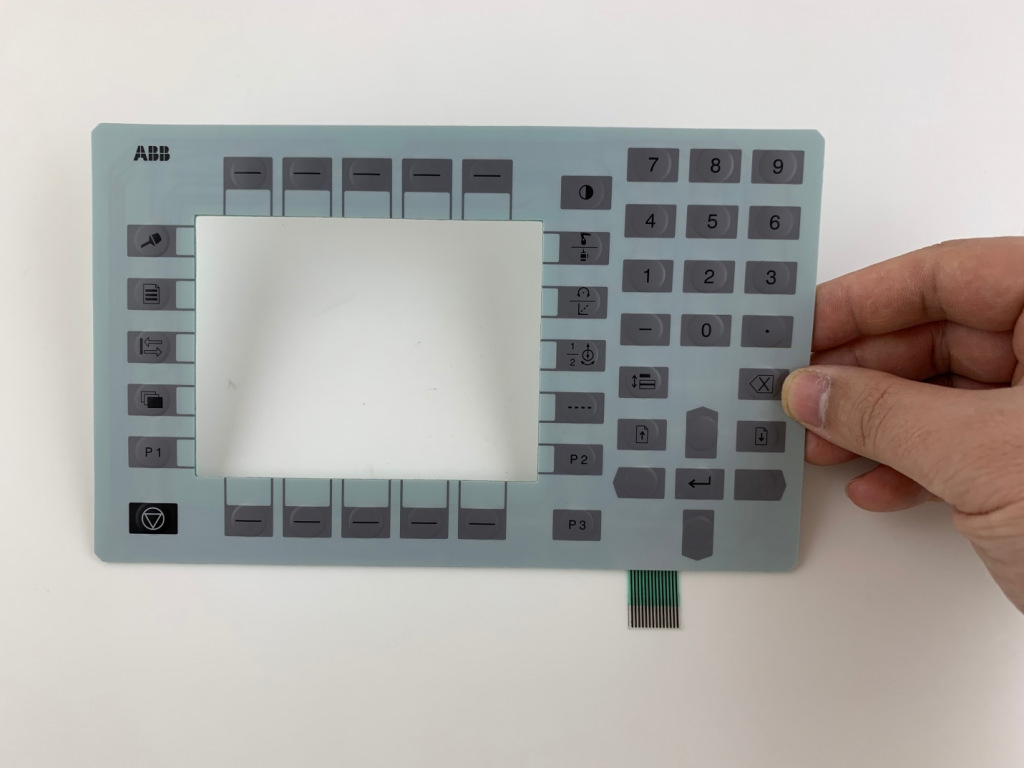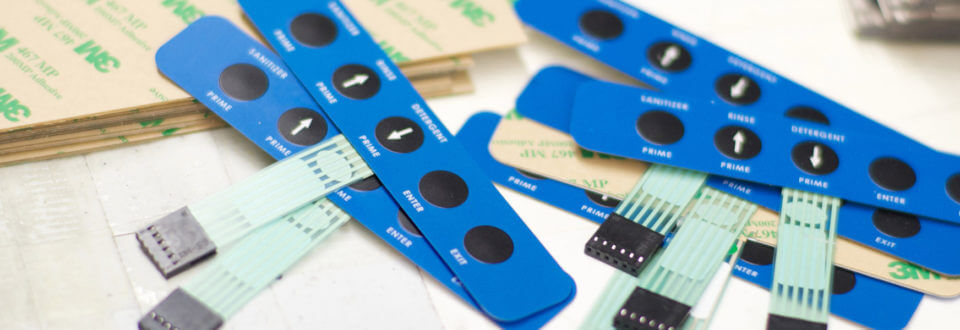Exploring the Different Types and Features of a Membrane Switch
Exploring the Different Types and Features of a Membrane Switch
Blog Article
Understanding Membrane Switches: The Trick to Reliable and long lasting Controls
Membrane switches represent an essential facet of modern interface style, blending functionality with resilience in different applications. These versatile components not just assist in customer interaction yet are additionally engineered to endure the roughness of requiring settings, from medical gadgets to commercial equipment. Understanding their building and construction, operation, and the myriad benefits they offer is necessary for designers and designers alike. As we discover the ins and outs of membrane switches, it comes to be clear that their function in boosting control systems is both intricate and profound, questioning regarding just how finest to take advantage of their capabilities in future developments.
What Are Membrane Buttons?
Membrane switches are an innovative remedy in the world of individual interface innovation, incorporating performance and design effortlessly. These tools function as a user interface in between individuals and digital systems, incorporating several parts right into a small format. Usually built from versatile, thin layers of materials, membrane buttons are made to respond to touch, enabling individuals to interact with equipment and digital tools successfully.
The main aspects of a membrane button consist of a printed circuit layer, visuals overlay, and a spacer layer that protects against unplanned activation. The graphic overlay can be customized to mirror brand identity or user choices, improving aesthetic appeals while making certain functionality. Membrane buttons are typically utilized in various applications, consisting of medical devices, consumer electronics, and industrial tools, owing to their toughness and resistance to environmental aspects such as moisture and dirt.
Among the essential advantages of membrane layer buttons is their capacity to hold up against wear and tear, making them excellent for high-traffic atmospheres. Furthermore, they are lightweight and require minimal room, allowing for cutting-edge layouts in item growth. Overall, membrane switches represent a efficient and practical choice for modern-day electronic interfaces, marrying modern technology with user-centric style concepts.

Exactly How Membrane Switches Job
The operation of membrane switches joints on an easy yet efficient mechanism that converts individual input right into electronic signals. When an individual presses the button, the top layer deforms, allowing a conductive aspect in the circuit layer to make call with an equivalent conductive pad on the underside of the graphic overlay.
The design of membrane buttons can differ, yet they usually integrate domes or responsive aspects to supply comments to the individual, boosting the total experience. The products used in membrane switches, such as polyester or polycarbonate, add to their sturdiness and resistance to ecological variables, including wetness and dirt. The published circuits are commonly enveloped, which secures them from wear and tear over time.

Benefits of Membrane Layer Buttons
One of the key advantages of membrane layer switches is their flexibility in design, enabling them to be tailored to satisfy certain user needs and visual requirements. This flexibility includes various sectors, where various forms, dimensions, and shades can be utilized to improve customer interaction and aesthetic charm.
Furthermore, membrane layer switches are recognized for their toughness. Constructed from robust materials, they are resistant click here for more to dirt, wetness, and physical wear, which dramatically prolongs their life-span contrasted to traditional mechanical switches. This toughness makes them particularly appropriate for high-traffic settings and applications calling for longevity.

Furthermore, membrane switches provide a streamlined profile, causing a thinner design that can be incorporated into various gadgets without including bulk. This feature not only boosts the aesthetic allure yet likewise adds to a much more ergonomic product style.

Applications of Membrane Layer Switches
Functional and user-friendly, membrane layer switches locate applications throughout a wide variety of industries, including medical tools, consumer electronic devices, and industrial tools. In the clinical field, these buttons are integral to gadgets such as analysis devices, person monitoring systems, and infusion pumps, where reliability and ease of cleaning are essential. Their ability to maintain and withstand harsh atmospheres performance makes them optimal for such applications.
In consumer electronic devices, membrane layer buttons are made use of in products like microwaves, cleaning devices, and remote controls - membrane switch. Their smooth design allows for intuitive interface, boosting the overall customer experience while offering toughness and resistance to put on and tear
Commercial tools likewise gains from membrane layer switches, specifically in control panels for equipment and automation systems. These switches offer security against dirt and moisture, ensuring regular efficiency in difficult atmospheres. In addition, their personalized attributes allow manufacturers to customize them to specific operational demands, improving effectiveness and functionality.
Picking the Right Membrane Layer Switch Over
When choosing a membrane button, it is necessary to consider different factors that affect performance and suitability for details applications. The main factors to consider include ecological conditions, responsive feedback, longevity, and style requirements.
First, evaluate the operating setting; switches subjected to moisture, chemicals, or severe temperature levels need details materials to make sure long life and performance. Next off, evaluate the need for responsive feedback. Depending upon customer communication, some applications might gain from a tactile action to validate pop over to this web-site activation, while others might like a non-tactile design for aesthetic reasons.
Resilience is one more crucial aspect; membrane layer switches must be made to endure frequent usage, influences, and abrasion. Ensure the selected switch can sustain the anticipated lifecycle, particularly in wikipedia reference high-usage scenarios.
Verdict
In verdict, membrane switches over serve as vital components in the style of reliable and resilient control systems across various sectors. The flexibility of membrane layer switches over enables for tailored services that satisfy specific functional needs, enhancing their value in contemporary technology.
Membrane layer switches over represent a critical element of modern interface style, mixing functionality with strength in different applications.Membrane layer buttons are an advanced remedy in the realm of user interface innovation, combining capability and layout perfectly. Commonly built from flexible, thin layers of materials, membrane layer switches are developed to respond to touch, making it possible for users to engage with equipment and electronic tools effectively.
The style of membrane layer buttons can vary, however they often incorporate domes or responsive aspects to supply responses to the user, enhancing the overall experience.In conclusion, membrane changes serve as important elements in the layout of durable and dependable control systems across different markets.
Report this page